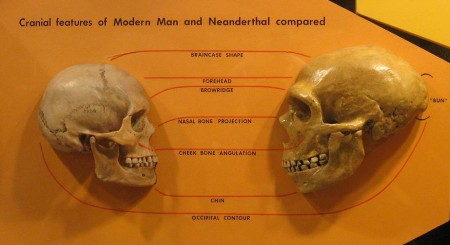In the binomial classification, modern humans are Homo sapiens (Genus and species). But you’ll frequently see us described as Homo sapiens sapiens, indicating that we’re a subspecies of Homo sapiens. One of the reasons for this is the still unresolved question of the neanderthals.
Some recent research suggests that 1-4% of our genes came from neanderthals. If true, this would mean that humans interbred, successfully, with neanderthals. Since one of the key parts of the definition of a species is that its members can produce fertile offspring, neanderthals would then be a subspecies of human. Thus we would be Homo sapiens sapiens and neanderthals would be Homo sapiens neanderthalensis, as opposed to being Homo neanderthalensis, a separate species in the same genus.

Perhaps even more interesting, the same researchers who did the gene work on neanderthal bones also sequenced some bones from Siberia, and found what may well be another subspecies of humans (the original article is at Krause et al., 2010). The genes are different from what’s been found before, but are in an area, and from a time period, shared both by modern humans and neanderthals. And, modern Melanesians (from the islands north and east of Australia) may share some of the genes of the new group. So this could even be another sapiens subspecies.
There are a number of caveats to this research, which is based primarily on gene sequencing and statistics. One key assumption that I’ve always been skeptical about is that DNA mutates at a fixed rate. However, this type of science ties very closely in to our discussions of evolution and themes of what it means to be human.
There are two great novels that address these two things, but I’ll only be using one of them. The one I’ll use is The Chrysalids by John Wyndham, which I’ve mentioned before (here and here). The other is War Games by Brian Stableford (aka Optiman). While the Chrysalids deals with accelerated mutation resulting from nuclear fallout, War Games considers the effects and moral implications of intentional genetic optimization (hence the other title for the book).